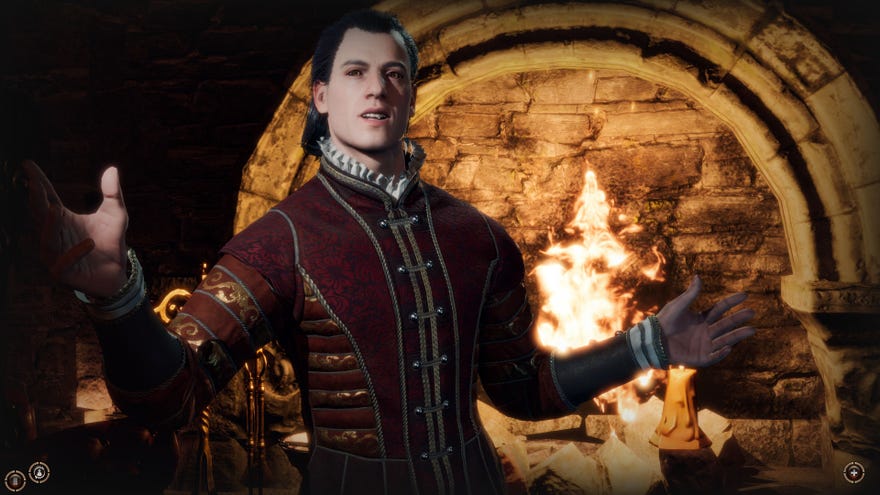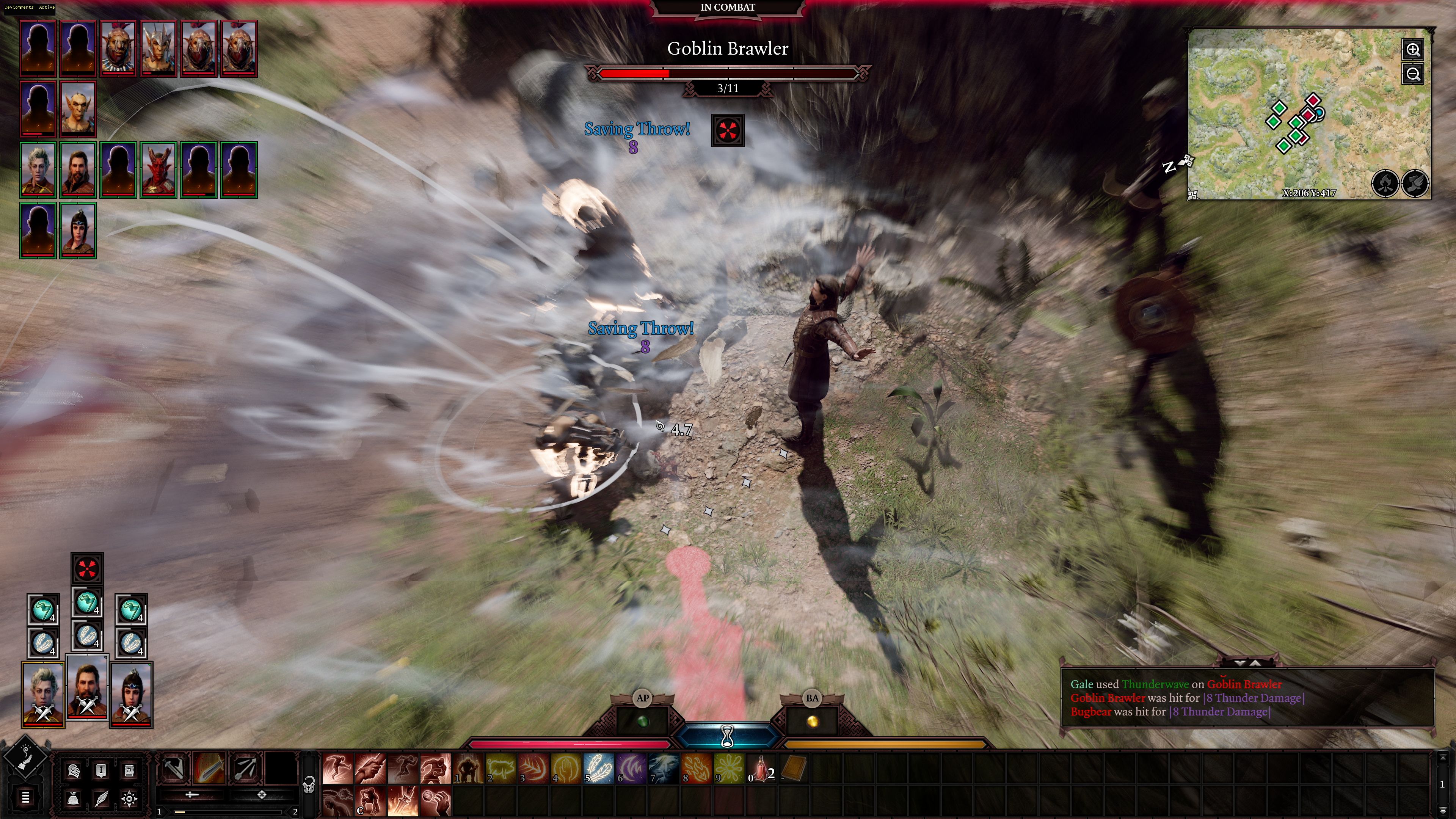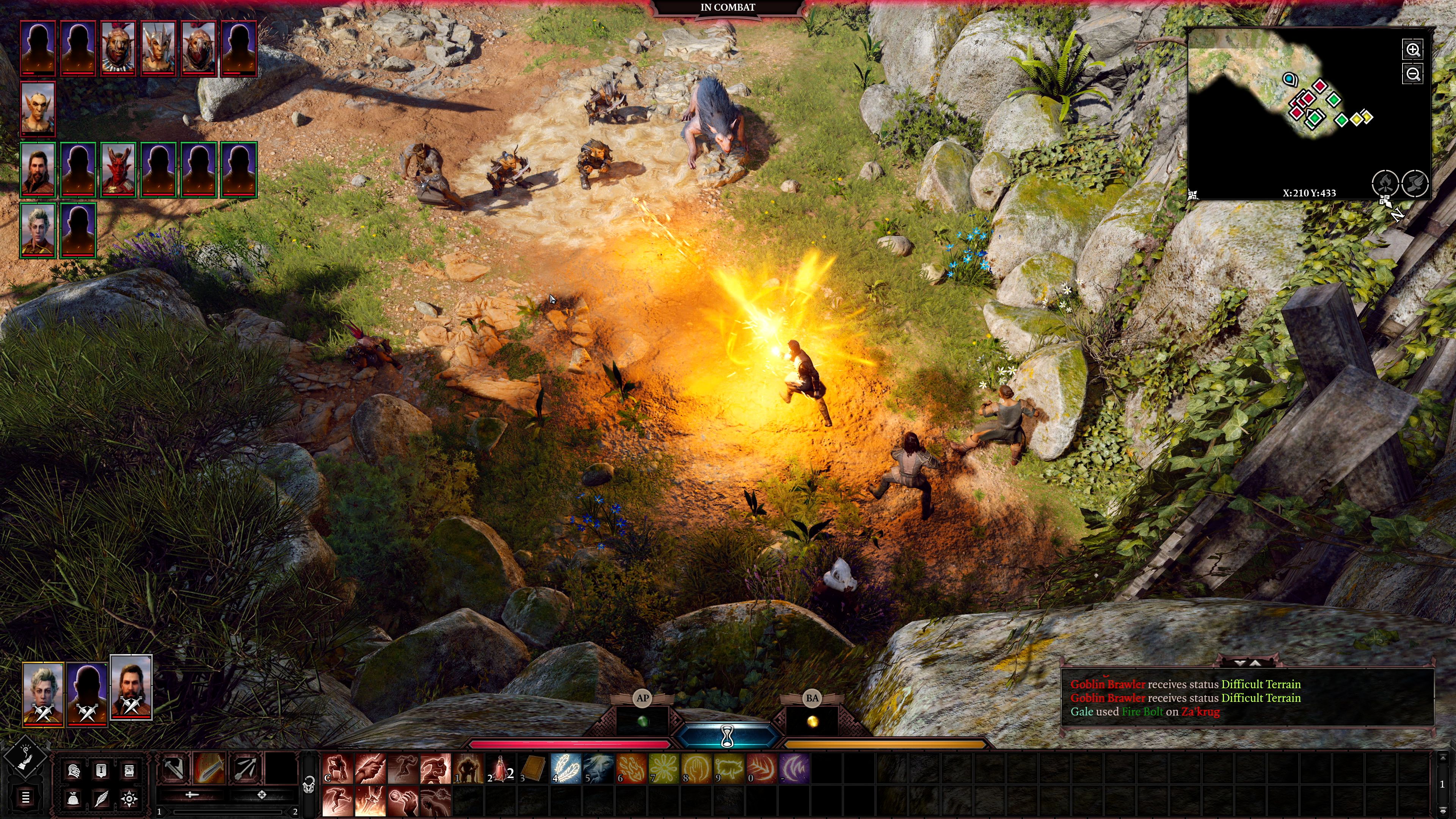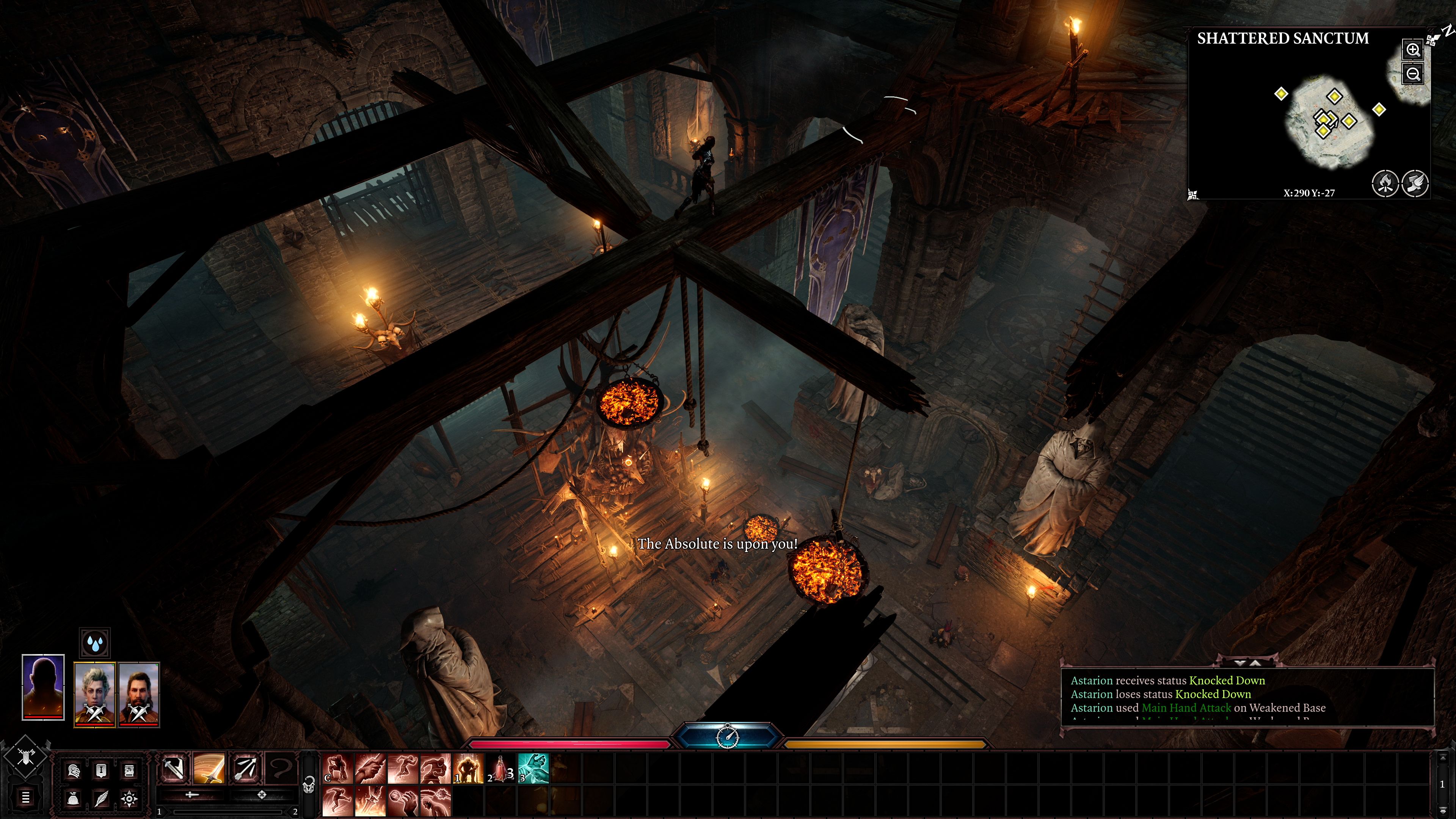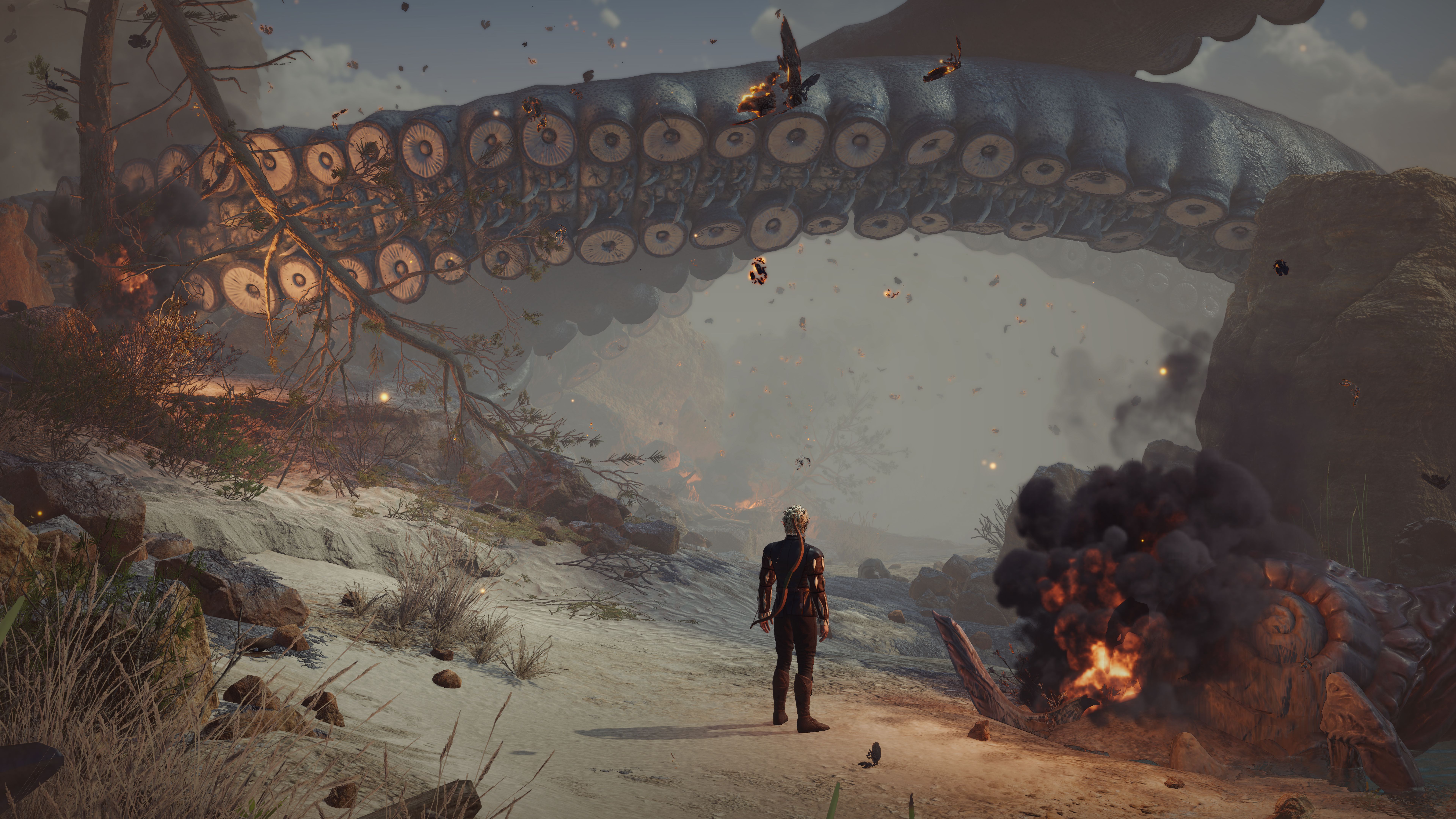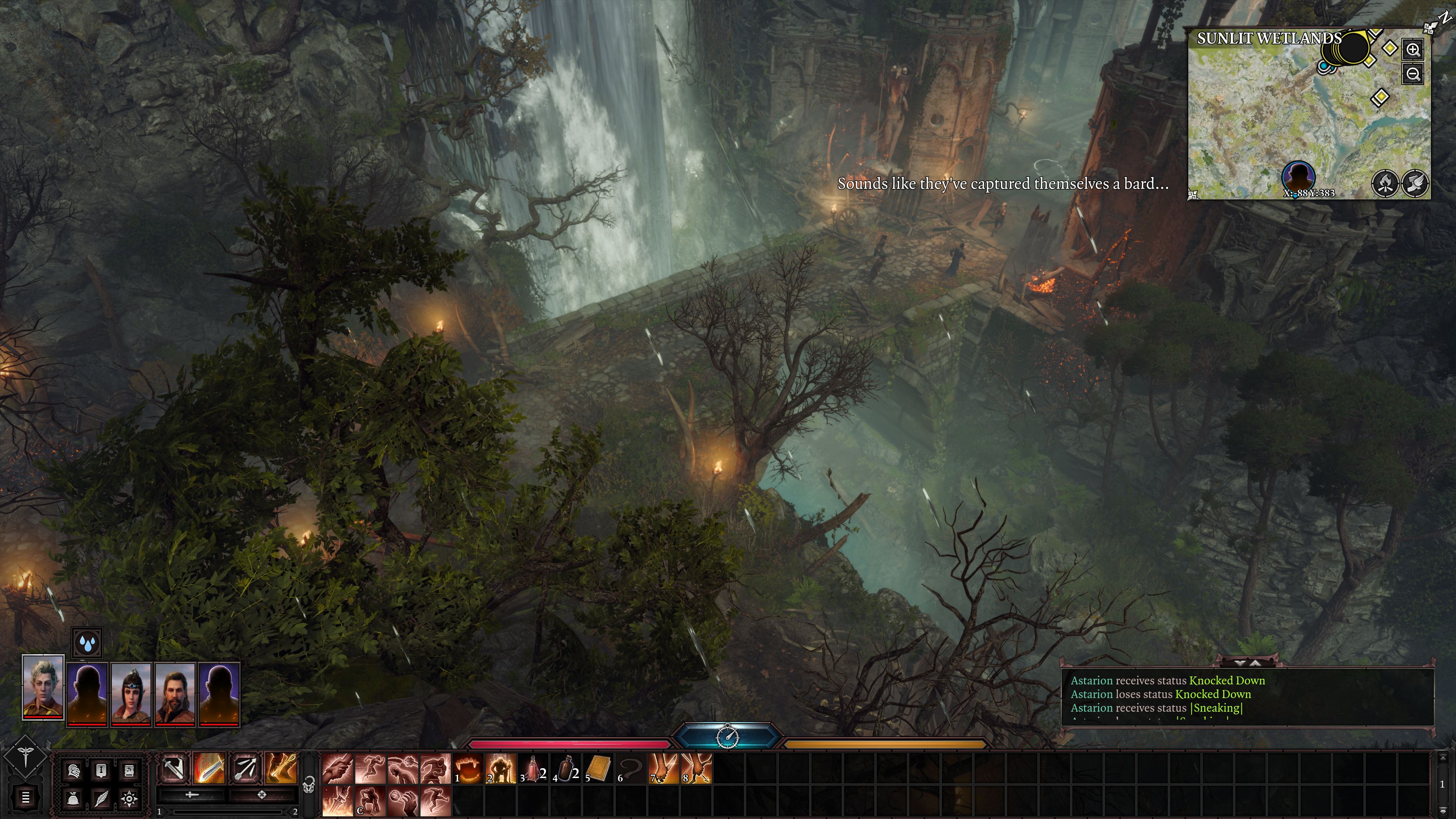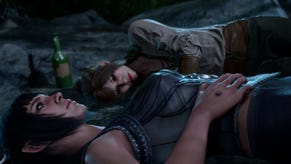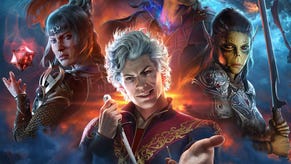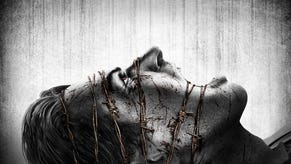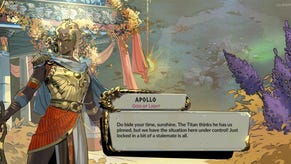Baldur's Gate 3 is nearly here, and it looks as good as you hope
Gather your party
If you play tabletop games like Dungeons & Dragons - heck, if you play a lot of video games like Hitman or XCOM where you rely on a blend of skill and luck - you'll know that it's more fun when everything goes wrong but you manage to make it through anyway. Things going according to plan are boring. This is why it was great that, when a handful of journalists were shown a hands-off demo of Baldur's Gate 3, founder of Larian and director of BG3 Swen Vincke failed almost every dice roll, every passive skill check, and every attempt at sneaking he made.
Baldur's Gate 3 is an epic RPG with turn-based combat, and is the long awaited sequel to the '90s BioWare classic. The demo went terribly, which meant it was a very good demo. Vincke stood at the computer, his failures writ large in a projection on the wall behind him, and steepled his hands over his face. It had been a long couple of days. To get this, the world premiere preview build of Baldur's Gate 3 working, they'd had to sync it via a mobile phone because the hotel internet was broken. "I think," he said, "I will throw my shoes."
"There's no wrong way of playing a game," Vincke told VidBud Matthew and I later. "But in general if you experiment and you find the game rewards you for that, you keep on doing it. And so we just try to be very generous to you by putting lots of things in there." Even if you aren't thinking deeply about the systems in play, and just think it's cool that you could throw your boots, Vincke reckons that will get you thinking about what else you can try throwing. "If I would have thrown a vial, the vial would break and whatever was in there would have come out of it. Maybe I could have done something with that surface."
The boots were lobbed in the later stages of a fight against a group of bandits. Two of the three man party (though you can have a party of up to four) were bleeding out on the stairs, while the last, our player character, Astarion the elf rogue, was, er, running away. As well as the footwear warfare, Vincke cast the Mage Hand cantrip, to distract an archer chasing him. Astarion eventually bested his foes by getting a couple of lucky shots off and leading the group into a few friendly - or at least, neutral - NPCs nearby. It was an excellent showcase of what BG3 is about.
For example: familiarity with Dungeons & Dragons will probably help, because many of the rules are ripped straight (as they say) from those most famous of TRPG pages. A cantrip is a small spell you can cast without using a spell slot. Passive checks are ability checks that happen without you rolling any dice - so, all the characters in Vincke's party failed a passive perception check to notice a hidden stash under a rock. There's movement speed, actions, bonus actions, advantages to attacking from higher ground, and so on. If you're well into the numbers you can open a feed in the bottom right corner that shows you all the maths happening, and exactly why your attack just missed.
But you also don't have to do that. Larian are working hard to balance BG3 so that it's accessible even if you don't spend every Friday night pretending to be a wizard with four friends and twice as many dice, whilst stuffing your face with maize-based snacks. "You've seen me play. There were a lot of rules active in the background, a lot of rolls being done," said Vincke. "They're being done for you unless it's interesting for you to do them yourself." They also went for the D&D rules that are easiest to inherently understand, like darkness and light while sneaking. Though not everything was ported from the books, a lot was. "It's there, and if you want to it's just a tooltip away and you get the entire calculation. But if you don't that's fine too." Vincke said that his hope is that the game is tangible enough, that you can feel what's happening as you play, that you don't necessarily have to think about the ruleset.
Thus, the throwing of boots. Combat in BG3 is simultaneous turn-based, but you can also enter turn-based movement out of combat to sneak around patrolling guards, inspired by the D&D mechanic Surprise. Or shoot at the vines suspending some fallen masonry above the field of battle, sending the stones crashing down on your opponents but perhaps alerting other enemies. Or do as Vincke did, and divide the party and send one character sneaking around the side, get them to crouch carefully behind an archer on a ledge until combat starts, and then shove the archer off and usurp their place.
The shove is great. In the right circumstances it can send a character flying in a beautiful parabolic arc into, for instance, a pit with some giant spiders in it. I began softly chanting "shove him! Shove him!" whenever the opportunity arose in the demo. I can think of no instance where the shove would not be helpful. Vincke acknowledged that the shove appeared overpowered, but only because those checks were about the only ones he always succeeded at. "It's just fun. It's like putting things on fire. It's just fun to throw people off stuff," he said. "It's going to fail also. There is a failure on my shoving; depends how good I am at shoving. It's always a risk, when you do it and it fails. It's also context dependent."
Baldur's Gate 3 has the interlocking systems that Larian games have become famous for from their Divinity series. Vincke noted that all he really did as an early level rogue was shove people, pin them or throw things at them, but still had a lot of variety within that. You can apply a burning effect to your weapons by shoving them in a fire or brazier. This means you can make flaming arrows on the fly, and can therefore shoot at and explode barrels of black powder, f'r'instance.
You might conjure some grease on the floor to reduce enemy movement speed. Like in Divinity, you can pick up and move crates and barrels, but now you can stack them on top of one another to build your own high ground, or makeshift steps to get you up into the rafters, high above the baddies. Vincke described BG3 as having a lot of verticality, with bridges and overhangs - "you can have an entire dungeon underneath so we can all be on different layers. I can throw stuff to you that you can use."
There are other things in there to delight the D&D aficionado. Vollo turned up, and was very funny. Vincke confirmed to us (in an RPS exclusive, apparently) that you can use Inspiration points to reroll on fails, and that there will be owlbears. But VidBud Matthew enjoyed the preview as much as I did without any D&D knowledge - though he's a seasoned veteran of Larian's last big fantasy epic, Divinity: Original Sin 2.
Still, if you like big silly Lord Of The Ringsian larks then you'll find something to enjoy in the setting. After all, one doesn't need to know what a nautiloid is to enjoy the opening cinematic, wherein a big tentacled airship is chased through dimensions by warriors riding dragons. At this early stage in the preview process my mind slammed a fist on the table and yelled "fuck it, I'm in!" like the explosives expert in a heist movie.
Your player character - indeed, all the characters who can make up your party - were taken prisoner by mind flayers, psychic octopus lads who eat brains. While in a fleshy cage in the innards of the aforementioned squid airship, a mind flayer puts a tadpole in your head melon via your eye hole, in an extremely horrible bit of the cinematic that only serves to highlight the design flaws of the skull. But! The nautiloid crashes. You and any plucky survivors you team up with must find a way to get rid of the tadpoles before they grow into full mind flayers, taking over your body in the process. A good, simple starting goal, which of course becomes more complex as you discover various machinations and factions, and Vincke was quick to point out that if the story seems linear at first, that's only because you've underestimated how many branches there could possibly be.
Vincke explained that the three main themes of the game are trust, survival, and power. He started thinking about the mind flayers when on a flight to Wizards Of The Coast to discuss their script for the game for the first time, and he saw a picture of a man with a tadpole crawling on his eye. "If you have a thing like that, survival is suddenly very important," he said, describing the tadpole as something that can lead you to darkness or something that needs to be removed. The game also features a "mind meld" where you can communicate with other characters who have a tadpole in their heads.
"We added trust as a second theme, because you have a tadpole in your head - maybe you're listening to it? Maybe I'm listening to it, you don't know. But we have to work together to survive!" explained Vincke. Power was the last theme to be added. "Because there's a lure to the tadpole, there's a lot of power that's being promised to you."
In the course of the preview we saw a little bit of the starting area, and while BG3 isn't finished with some slightly rough-around-the-edges animation and a couple of glitches (Larian are using two motion capture studios in London to animate everything), the environments are certainly beautiful. The preview started at the nautiloid crash site, where ash rained down on an otherwise peaceful beach, and the remnants of the crash turned the ground around it black and melted. Here Vincke fought a brace of intellect devourers - big pink brains that scuttle on four legs - and scored his first loss.
After the similarly doomed fight with bandits in some pretty surface ruins, the party descended into a dark crypt, where Vincke doused the torches to make sneaking easier, and then abso fucked the stealth anyway, alerting all the guards. He eventually made it into a room which he knew was full of traps that spewed oil onto the floor, whilst fireballs shot from the walls. This section, too, was abso fucked, but Vincke found the key to a secret tomb after burning a mere two of the party to a crisp.
After notcing a hidden switch and stealing an amulet that allowed him to talk to the dead, Vincke eventually made it back outside (though not before also abso fucking an encounter with some skeletons) and headed deeper into the forest, the kind of sunny, slightly sparse kind you find on coastlines, full of tall pines and dotted with bright flowers. He came across a hub where some travellers had set up a camp amongst echoing caves and an old druid temple, but they were preparing to leave after an attack by goblins. Vincke then skipped ahead by about 15 hours worth of playtime, to the goblins' fort in a dilapidated castle. The dungeons were full of flaming torches and spiked wooden decorations.
Character creation is as detailed and has a lot in common with Original Sin 2. You can choose one of the preset Origin characters to play as (while the others become NPCs who may join your team), or create your own. There's an array of fantasy races (tiefling, halfling, dwarf, githyanki, human, drow, half-drow, elf, half-elf), and some come with sub-races - what kind of elf or dwarf are you? There are the usual classes to choose from, and backgrounds, both influencing the type of unique options that may arise. Nobles get some haughty dialogue options, rogues can pick locks. When resting, you go to a standalone camp area (like you got in the first Dragon Age game) where you can chat to everyone tagging along with you and further or change relationships. The Origin characters, with their fleshed out backstories, can have unique interactions.
"The best way of telling a narrative, at least in a video game, is to show it. We wanted to have lots of relationships between the party members, so that there was a real party forming," said Vincke.
We met some of your party. As with Original Sin 2, the game's writers are paired with companions (though one writer has two because of how they interact). Lae'zel is a fierce and pretty bloodthirsty warrior githyanki warrior, a militaristic race with tough greenish-yellow skin who all kind of look a bit like the Grinch. Shadowheart is a half-elf cleric on a secret mission, pragmatic and blunt but a bit intense. Wyll is a heroic human warlock with David Bowie eyes who very definitely has some species of terrible secret. Gale is an ambitious human wizard who likewise very definitely has some species of terrible secret (magic: not even once, kids). Gale and Astarion both have big laconic raised eyebrow energy.
Our boy Astarion is a high-elf rogue with a noble background (my notes say "fancy doublet; excellent posh-boy voice"). Vincke described him as "a huge asshole" who only cares about himself. He's also a vampire spawn. He might get urges to eat new people he meets. In the preview, he dreamt of his vampire master. One night at camp, Vincke made him drink the blood of one of his new companions, so he had to roll to successfully bite her, and then roll to successfully stop. Failing either could have lasting consequences -- as would succeeding.
At key moments like this, you do have to perform a dice roll. A d20 appears on screen and you're shown the score you have to beat. Click to shoot your shot, and the die spins, before eventually stopping… It's a dramatic moment that played out in the preview like someone making a risky shot across goal in a football match; a "weeeeeeyyyyyyy OOOOOOHHH!" from the crowd every time.
Like any good D&D game, you can play Baldur's Gate 3 with friends. Your checks are personal, but you can have group discussions and in group conversations the d20 is visible. "If you were Shadowheart, I would still be able to bite you," said Vincke. "Because we have this mind meld mechanic going on, so I can see through your eyes when that is happening. Dreams, we share them, right? So we're seeing the same thing, and we're also showing what options you're considering. So that's fun in multiplayer!" The same thing goes for the simultaneous turn-based combat: everyone makes their choice and when they're all done it's the next turn.
It's important that players feel like their choices matter. Vincke pointed out that if he had failed the passive check to notice the secret switch in the dungeon, he would never have found the amulet to speak to the dead, and the fight with the skeletons would never even have happened. "If I fail a roll, that's it. It's closed off. If I decide to be stupid enough to bite Shadowheart and I fail that roll, she wakes up. What do you think is gonna happen?" he said. "These are all things that you have when you play the tabletop. The sense of importance, the stakes of the roll." That's also the reason for constant passive checks. Vincke plays D&D with Mike Mearls, who leads the design of the 5th edition D&D rules, as dungeon master, and Mearls apparently rolls passive checks constantly. "I'm 100% sure - he doesn't want to admit it - that he's not always rolling for something, but it creates so much tension."
This kind of failure is a potentially daunting prospect, especially since this Baldur's Gate 3 is obviously going to take dozens of hours per play through. But that kind of real jeopardy is why Dungeons & Dragons is at its best when you fail but survive anyway. And that's why the preview I saw of Baldur's Gate 3 - where everything that could go wrong, went wrong - made me so excited to play it myself when it comes to Steam Early Access later in 2020.
Disclosure: Former RPS deputy editor Adam Smith is now a writer at Larian working on Baldur's Gate 3. We don't know what bits of it he's writing but if there's a companion who likes Euro Truck Simulator, then it's probably that one.
